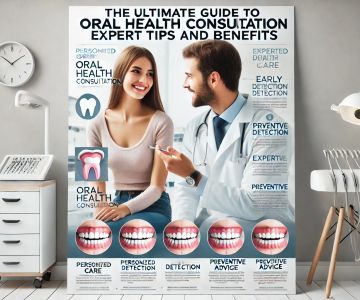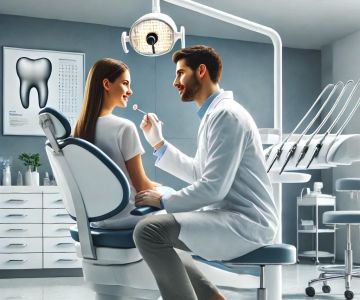1. What is Oral Chlamydia and Why is it Important to Check for It?
Oral chlamydia, also known as chlamydia of the throat, is a sexually transmitted infection (STI) caused by the bacterium *Chlamydia trachomatis*. While most people are familiar with chlamydia affecting the genital area, it can also be transmitted to the throat through oral sex. Though it may not always present noticeable symptoms, untreated oral chlamydia can lead to serious health complications, including an increased risk of other STIs and fertility issues. This makes it essential to regularly check for oral chlamydia, especially if you have had unprotected oral sex or are at risk of exposure.
2. How Is Oral Chlamydia Transmitted?
Oral chlamydia is primarily spread through oral-to-genital contact, particularly when one person performs oral sex on a partner who is infected with chlamydia. It can also be contracted during oral-to-anal contact, though this is less common. Despite its potential seriousness, oral chlamydia often goes unnoticed because it can be asymptomatic, meaning many individuals may not realize they are infected. This is why it is crucial to get tested if you suspect any exposure or are engaging in behaviors that increase the risk of STI transmission.
3. Recognizing Symptoms of Oral Chlamydia
As previously mentioned, oral chlamydia may not cause any symptoms in some people. However, for those who do experience symptoms, they may include:
3.1. Sore Throat
A common symptom of oral chlamydia is a sore throat, which may feel similar to a cold or other throat infection. The throat may be red or irritated, and swallowing may become painful. However, these symptoms can also be indicative of other conditions, so it’s essential to get tested for a more accurate diagnosis.
3.2. Swollen Lymph Nodes
Some people with oral chlamydia may experience swollen lymph nodes in the neck. This is a common reaction to infections in the body, including chlamydia. Swollen glands can often be tender to the touch and may cause discomfort.
3.3. No Symptoms
It’s important to remember that many people with oral chlamydia do not exhibit any symptoms. This is why regular testing is recommended for individuals who are sexually active and may be at risk. Even without symptoms, the infection can still cause complications and be spread to others.
4. How to Get Tested for Oral Chlamydia
If you suspect that you may have oral chlamydia or are at risk due to recent sexual activity, it is important to get tested. Testing for oral chlamydia is straightforward and involves a swab of the throat, which is then tested in a lab for the presence of *Chlamydia trachomatis*. Below are the steps involved in getting tested:
4.1. Visit a Healthcare Provider
The first step in getting tested for oral chlamydia is visiting a healthcare provider. You can schedule an appointment with your general practitioner, a sexual health clinic, or a specialized clinic for STIs. During the visit, your healthcare provider will assess your symptoms and discuss your sexual health history. Based on this information, they may recommend a throat swab to check for the infection.
4.2. Throat Swab Test
A throat swab test is similar to a routine throat culture. The healthcare provider will use a swab to collect a sample from the back of your throat. The swab is then sent to a laboratory for testing. The laboratory will examine the sample for the presence of *Chlamydia trachomatis*, and the results are typically available in a few days.
4.3. At-Home Testing Kits
For those who prefer privacy or cannot visit a healthcare provider in person, at-home testing kits are available. These kits typically involve collecting a sample using a swab, which is then sent back to the company’s lab for testing. While convenient, it’s important to ensure that the home test kit is approved by a reputable health organization and provides accurate results.
5. What Happens if You Test Positive for Oral Chlamydia?
If you test positive for oral chlamydia, it is essential to follow the treatment plan provided by your healthcare provider. Chlamydia is treatable with antibiotics, typically a single dose of azithromycin or a week-long course of doxycycline. It is crucial to take the full course of antibiotics as prescribed, even if you begin to feel better before finishing the medication.
5.1. Informing Sexual Partners
If you are diagnosed with oral chlamydia, you should inform any recent sexual partners so that they can also get tested and treated if necessary. Chlamydia can easily be passed on, and it’s vital to prevent further transmission. Practicing safe sex by using condoms or dental dams during oral sex can reduce the risk of chlamydia and other STIs.
5.2. Follow-Up Testing
After completing treatment, it’s important to get retested for oral chlamydia to ensure the infection has been completely cleared. Your healthcare provider may recommend follow-up testing a few weeks after treatment, especially if you continue to engage in sexual activities that might put you at risk for reinfection.
6. Prevention and Safe Practices to Reduce the Risk of Oral Chlamydia
Preventing oral chlamydia is possible by taking proactive measures to reduce the risk of exposure. Here are some tips to help prevent the spread of oral chlamydia:
6.1. Use Barriers During Oral Sex
Using dental dams or condoms during oral sex can greatly reduce the risk of contracting oral chlamydia. These barriers act as a shield between the mouth and genital or anal areas, preventing the transmission of bacteria and viruses.
6.2. Regular STI Testing
Regular STI testing is crucial for individuals who are sexually active, especially those with multiple partners. Regular testing ensures that any infections are detected early and treated promptly, preventing complications and reducing the spread of STIs like oral chlamydia.
6.3. Open Communication with Partners
Open communication with sexual partners about sexual health and STI testing is essential. Before engaging in oral sex, it’s important to discuss STI testing and agree to take steps to protect each other’s health, such as using condoms or dental dams.
7. Conclusion: Stay Informed and Take Action
Oral chlamydia is a serious but treatable infection. By recognizing symptoms, getting tested, and following appropriate treatment protocols, you can protect your health and the health of your sexual partners. Remember, the key to preventing and managing oral chlamydia is regular testing, early treatment, and practicing safe sex. If you’re unsure about your risk or need more information, don't hesitate to reach out to a healthcare provider for guidance and testing options.
For further information or to access healthcare services and recommendations, visit Dentistry Toothtruth for the most suitable services and support.
<>SEO Title: How to Check for Oral Chlamydia: Symptoms, Testing, and PreventionSEO Keywords: oral chlamydia, check for oral chlamydia, chlamydia throat infection, STI testing, oral STI prevention, dental dam, condom, chlamydia symptomsSEO Description: Learn how to check for oral chlamydia, including symptoms, testing options, treatment, and prevention methods. Understand the importance of safe practices to protect yourself and others.




 Westgate Dental Arts
Westgate Dental Arts Coventry Family Dental
Coventry Family Dental Familia Dental
Familia Dental Dr. Daniel S. Fife, DDS
Dr. Daniel S. Fife, DDS Dentistry At Suburban Square: Michael I. Wollock, DMD
Dentistry At Suburban Square: Michael I. Wollock, DMD Comfort Care Dental
Comfort Care Dental The Importance of Oral Health Education During Pregnancy for a Healthy Pregnancy
The Importance of Oral Health Education During Pregnancy for a Healthy Pregnancy Why Skipping Dental Checkups Can Lead to Bigger Oral Health Problems
Why Skipping Dental Checkups Can Lead to Bigger Oral Health Problems Advantages of Porcelain Dental Restorations
Advantages of Porcelain Dental Restorations Best Tips for Brushing Your Teeth Properly for Healthy Gums: Essential Techniques for Oral Health
Best Tips for Brushing Your Teeth Properly for Healthy Gums: Essential Techniques for Oral Health How Can Diabetes Cause Tooth and Gum Problems? Preventing and Managing Oral Health Issues
How Can Diabetes Cause Tooth and Gum Problems? Preventing and Managing Oral Health Issues Healthy Habits for Promoting Good Oral Health and Hygiene: Tips for a Healthy Smile
Healthy Habits for Promoting Good Oral Health and Hygiene: Tips for a Healthy Smile